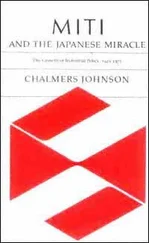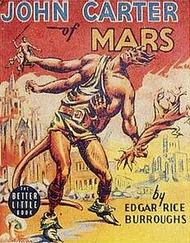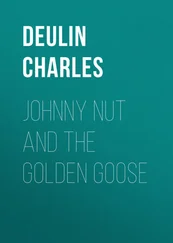Andrew Lang - John Knox and the Reformation
Здесь есть возможность читать онлайн «Andrew Lang - John Knox and the Reformation» — ознакомительный отрывок электронной книги совершенно бесплатно, а после прочтения отрывка купить полную версию. В некоторых случаях можно слушать аудио, скачать через торрент в формате fb2 и присутствует краткое содержание. Жанр: foreign_antique, foreign_prose, на английском языке. Описание произведения, (предисловие) а так же отзывы посетителей доступны на портале библиотеки ЛибКат.
- Название:John Knox and the Reformation
- Автор:
- Жанр:
- Год:неизвестен
- ISBN:нет данных
- Рейтинг книги:4 / 5. Голосов: 1
-
Избранное:Добавить в избранное
- Отзывы:
-
Ваша оценка:
- 80
- 1
- 2
- 3
- 4
- 5
John Knox and the Reformation: краткое содержание, описание и аннотация
Предлагаем к чтению аннотацию, описание, краткое содержание или предисловие (зависит от того, что написал сам автор книги «John Knox and the Reformation»). Если вы не нашли необходимую информацию о книге — напишите в комментариях, мы постараемся отыскать её.
John Knox and the Reformation — читать онлайн ознакомительный отрывок
Ниже представлен текст книги, разбитый по страницам. Система сохранения места последней прочитанной страницы, позволяет с удобством читать онлайн бесплатно книгу «John Knox and the Reformation», без необходимости каждый раз заново искать на чём Вы остановились. Поставьте закладку, и сможете в любой момент перейти на страницу, на которой закончили чтение.
Интервал:
Закладка:
Knox avers that the besiegers of St. Andrews Castle, despairing of their task, near the end of January 1547 made a fraudulent truce with the assassins, hoping for the betrayal of the castle, or of some of the leaders. 21 21 Knox , i. 182. “The siege continued to near the end of January.” “The truce was of treacherous purpose,” i. 183.
In his narrative we find partisanship or very erroneous information. The conditions were, he says, that (1) the murderers should hold the castle till Arran could obtain for them, from the Pope, a sufficient absolution; (2) that they should give hostages, as soon as the absolution was delivered to them; (3) that they and their friends should not be prosecuted, nor undergo any legal penalties for the murder of the Cardinal; (4) that they should meanwhile keep the eldest son of Arran as hostage, so long as their own hostages were kept. The Government, however, says Knox, “never minded to keep word of them” (of these conditions), “as the issue did declare.”
There is no proof of this accusation of treachery on the part of Arran, or none known to me. The constant aim of Knox, his fixed idea, as an historian, is to accuse his adversaries of the treachery which often marked the negotiations of his friends.
From this point, the truce, dated by Knox late in January 1547, he devotes eighteen pages to his own call to the ministry by the castle people, and to his controversies and sermons in St. Andrews. He then returns to history, and avers that, about June 21, 1547, the papal absolution was presented to the garrison merely as a veil for a treasonable attack, but was rejected, as it included the dubious phrase, Remittimus irremissibile – “We remit the crime that cannot be remitted.” Nine days later, June 29, he says, by “the treasonable mean” of Arran, Archbishop Hamilton, and Mary of Guise, twenty-one French galleys, and such an army as the Firth had never seen, hove into view, and on June 30 summoned the castle to surrender. The siege of St Andrews Castle, from the sea, by the French then began, but the garrison and castle were unharmed, and many of the galley slaves and some French soldiers were slain, and a ship was driven out of action. The French “shot two days” only. On July 19 the siege was renewed by land, guns were mounted on the spires of St. Salvator’s College chapel and on the Cathedral, and did much scathe, though, during the first three weeks of the siege, the garrison “had many prosperous chances.” Meanwhile Knox prophesied the defeat of his associates, because of “their corrupt life.” They had robbed and ravished, and were probably demoralised by Knox’s prophecies. On the last day of July the castle surrendered. 22 22 Knox , i. 203-205.
Knox adds that his friends would deal with France alone, as “Scottish men had all traitorously betrayed them.”
Now much of this narrative is wrong; wrong in detail, in suggestion, in omission. That a man of fifty, or sixty, could attribute the attacks on Beaton’s murderers to mere revenge, specially to that of a “wanton widow,” Mary of Guise (who had, we are to believe, so much of the Cardinal’s attentions as his mistress, Mariotte Ogilvy, could spare), is significant of the spirit in which Knox wrote history. He had a strong taste for such scandals as this about the “wanton widow.”
Wherever he touches on Mary of Guise (who once treated him in a spirit of banter), he deals a stab at her name and fame. On all that concerns her personal character and political conduct, he is unworthy of credit when uncorroborated by better authority. Indeed Knox’s spirit is so unworthy that for this, among other reasons, Archbishop Spottiswoode declined to believe in his authorship of the “History.” The actual facts were not those recorded by Knox.
As regards the “Appointment” or arrangement of the Scottish Government with the Castilians, it was not made late in January 1547, but was at least begun by December 17-19, 1546. 23 23 Thorpe’s Calendar , i. 60; Register Privy Council , i. 57, 58; Tytler, vi. 8 (1837).
On January 11, 1547, a spy of England, Stewart of Cardonald, reports that the garrison have given pledges and await their absolution from Rome. 24 24 State Papers , Scotland, Thorpe, i. 61.
With regard to Knox’s other statements in this place, it was not after this truce, first, but before it, on November 26, that Arran invited French assistance, if England would not include Scotland in a treaty of peace with France. An English invasion was expected in February 1547, and Arran’s object in the “Appointment” with the garrison was to prevent the English from becoming possessed of the Castle of St. Andrews. Far from desiring a papal pardon – a mere pretext to gain time for English relief – the garrison actually asked Henry VIII. to request the Emperor, to implore the Pope, “to stop and hinder their absolution.” 25 25 Bain, Calendar of Scottish Papers , 1547-69, i. I; Tytler, iii. 51 (1864).
Knox very probably knew nothing of all this, but his efforts to throw the blame of treachery on his opponents are obviously futile.
As to the honesty of his associates – before the death of Henry VIII. (January 28, 1547), the Castilians had promised him not to surrender the place without his consent, and to put Arran’s son in his hands, promises which they also made, on Henry’s death, to the English Government; in February they repeated these promises, quite incompatible with their vow to surrender if absolved. Knox represents them as merely promising to Henry that they would return Arran’s son, and support the plan of marrying Mary Stuart to Prince Edward of Wales! 26 26 Bain i. 2; Knox , i. 182, 183.
In March 1547, English ships gathered at Holy Island, to relieve the castle. Not on June 21, 1547, as Knox alleges, but before April 2, the papal absolution for the murderers arrived. They mocked at it; and the spy who reports the facts is told that they “would rather have a boll of wheat than all the Pope’s remissions.” 27 27 For the offering of the papal remission to the garrison of the castle before April 2, 1547, see Stewart of Cardonald’s letter of that date to Wharton, in Bain’s Calendar of Scottish Papers , 1547-69, i. 4-5.
Whatever the terms of the papal remission, they had already, before it arrived, bound themselves to England not to accept it save with English concurrence; and England, then preparing to invade Scotland, could not possibly concur. Such was the honesty of Knox’s party, and we already see how far his “History” deserves to be accepted as historical.
Next, what is most surprising, Knox’s account of the month of ineffectual siege by the French, while he was actually in the castle, rests on a strange error of his memory. The contemporary diary, Diurnal of Occurrences dates the sending (the arrival must be meant) of the French galleys, not on June 29, as Knox dates their arrival, but on July 24. Professor Hume Brown says that the Diurnal gives the date as June 24 (a slip of the pen), “but Knox had surely the best opportunity of knowing both facts” 28 28 John Knox , i. 80.
– that is, the number of the galleys, and the date of their coming. Despite his unrivalled opportunities of knowledge, Knox did not know. It is not quite correct to say that “Knox in his ‘History’ shows throughout a conscientious regard to accuracy of statement.” Whatever the number of the galleys (Knox says twenty-one; the Diurnal says sixteen), on July 13-14, they are reported by Lord Eure, at Berwick, as passing or having just passed Eyemouth. 29 29 State Papers , Domestic. Addenda, Edward VI., p. 327. Lord Eure says there were twenty galleys.
They did not therefore suffer for three weeks at the garrison’s hands, or for three weeks desert the siege, but probably reached the scene of action before the date in the Diurnal (July 24), as, on July 23, the French Ambassador in England heard that they were investing the castle. 30 30 Odet De Selve, Correspondence Politique , pp. 170-178.
Allowing five or six days for transmission of news, they probably began the attack from the sea about July 16 or 17, not, as Knox says, on June 30. Perhaps he is right in saying that the French galleys only fired for two days and retreated, rather battered, to Dundee. Land forces next attacked the hold, which surrendered on July 29 (as was known in London on August 5), that is, on the first day that the land battery was erected.
Интервал:
Закладка:
Похожие книги на «John Knox and the Reformation»
Представляем Вашему вниманию похожие книги на «John Knox and the Reformation» списком для выбора. Мы отобрали схожую по названию и смыслу литературу в надежде предоставить читателям больше вариантов отыскать новые, интересные, ещё непрочитанные произведения.
Обсуждение, отзывы о книге «John Knox and the Reformation» и просто собственные мнения читателей. Оставьте ваши комментарии, напишите, что Вы думаете о произведении, его смысле или главных героях. Укажите что конкретно понравилось, а что нет, и почему Вы так считаете.











